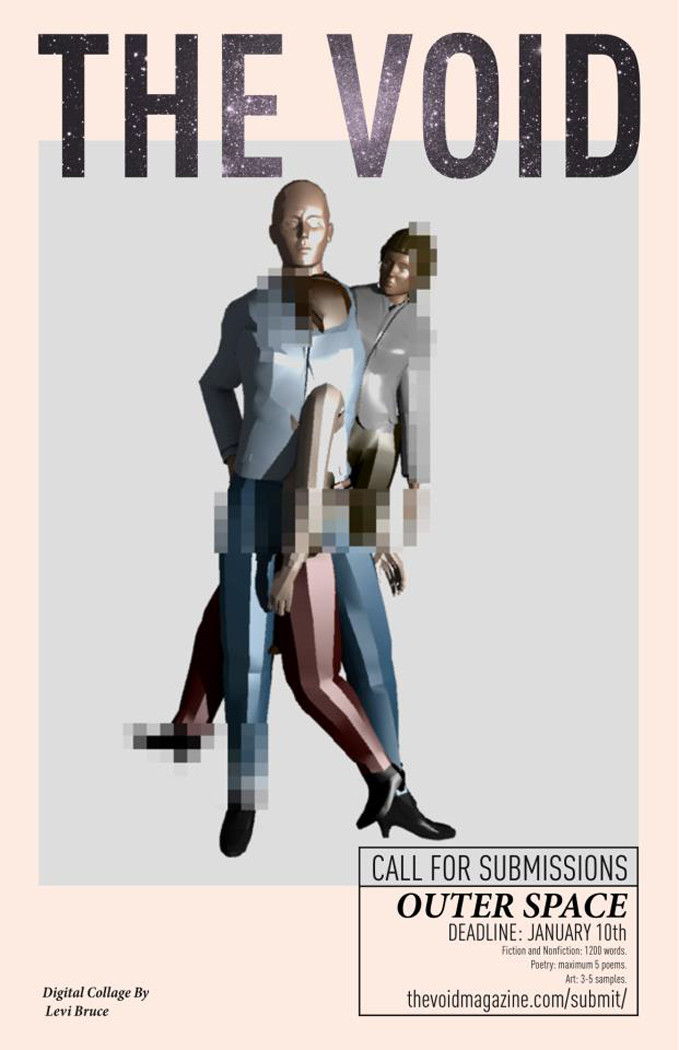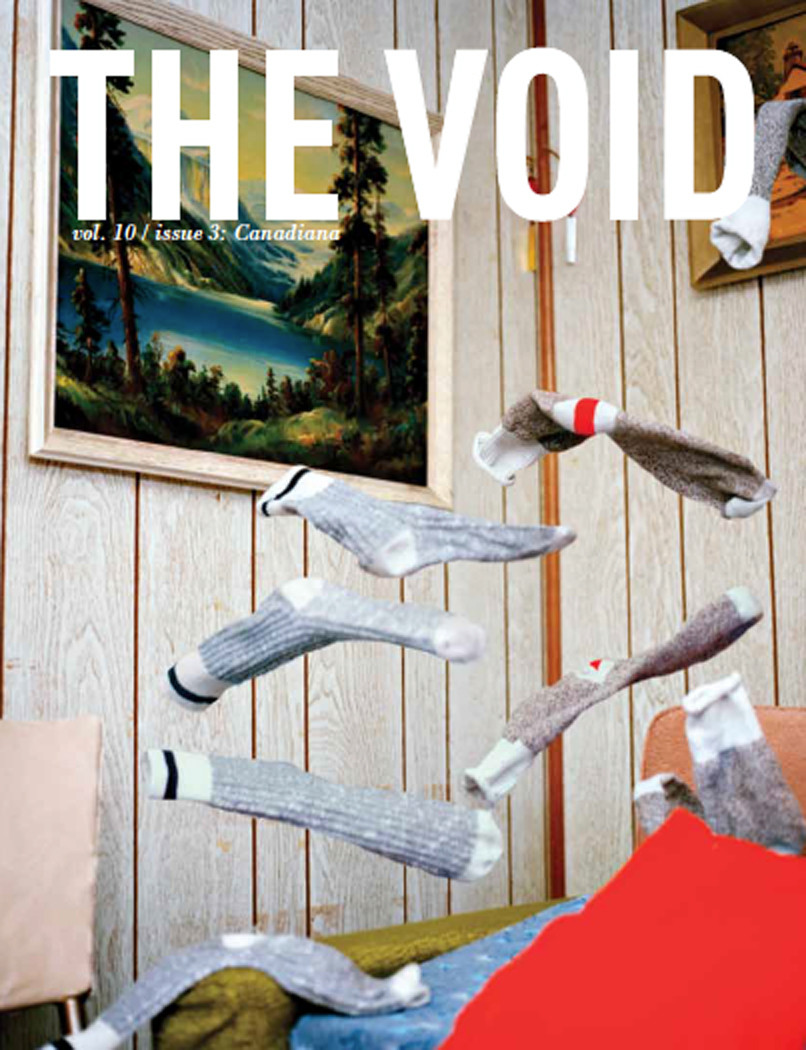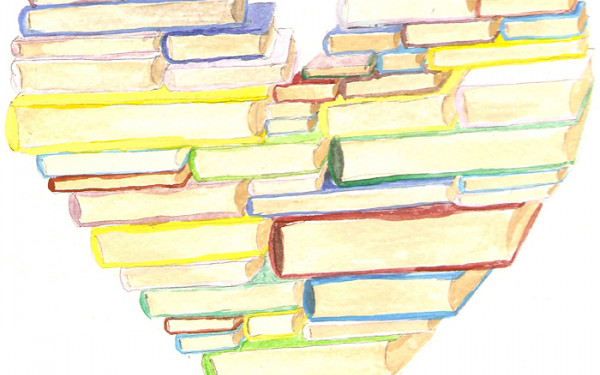Exploring the Void
Concordia’s Bilingual Literary Magazine Turns a New Page
One of the most attractive things about September is its promise of new beginnings.
New classes and new responsibilities emerge from every corner as nature turns a new leaf. However, some are passing more prominent checkmarks than others.
Last year marked the 10th anniversary of Concordia’s own literary magazine, The Void. This year, they’re celebrating the start of a new decade—and it’s amazing how much the magazine has evolved since it first hit the stands in 2002.
The Void came to be as an independent magazine celebrating poetry, fiction and creative nonfiction writing. It wasn’t until three years ago that the visual art aspect of the magazine was added.
The marriage of the two elements has done much to change the aesthetic and feeling of the collections.
“A friend of mine was published in the magazine […] and she did artwork based on the poem she had already [in the issue],” said co-editor-in-chief Jay Winston Ritchie. “It was really cool because it was right next to her written piece and you could see parts of the poem in the actual image.”
The editors hope that kind of fluidity will become commonplace as the magazine grows.
“Our artistic director is really into making the whole magazine into an art piece, very cohesive and everything. I think more and more [the art and literature] will be working together,” said Sophie Bisping, the magazine’s other co-editor-in-chief.
Still, it takes more than good art to pull a magazine together successfully. The team consists of one editor for each literary genre—poetry, fiction and non-fiction. The Void also has a French content editor.
Artwork being a new addition to the magazine, however, requires a new protocol.
“The art’s a bit different because they do an artist profile,” said Bisping. “The art director will choose somebody whose art they like and do a showcase on them throughout the issue.
“Since it’s specialized it just kind of happens that there’s a natural back-and-forth.”
It’s All About the Quality
With a masthead consisting of only seven people, this year’s Void has decided to cut down its output from its usual three issues a year to two.
It’s a decision that aims to focus on quality over quantity.
Two issues a year means only two themes as well, a selection process that takes a great deal of thought. This semester’s theme, television, stemmed from a conversation about the award-winning series Breaking Bad, but themes can come from any range of life’s inspirations.
“We all sit around a table and everyone starts shooting themes,” said Bisping. “One year there was an hour-long debate on whether to have a ‘butt’ issue or not,” she laughed.
“Sometimes it can get really absurd, but as soon as you have one editor that thinks something could be really funny but doable, then the discussion really starts. Usually we arrive at a consensus with something that’s restrictive enough to be a theme but also open enough for people to be inspired.”
The point of the themes is to guide, not to contain, giving the artists a loose framework to work within and opening a dialogue between pieces.
“We’ll always choose the quality of a submission over theme,” says Bisping. “If it’s a really high quality submission but not really related to the theme, we’ll speak with the author to orient it in some way, […] we want to publish what we think is good.”
Writers Welcome
Currently, students in the department of Creative Writing submit the majority of the magazine’s entries, but this year the editors hope to “emancipate it from its original home.”
“It’s about having other voices and other tones, other styles of writing,” Ritchie says.
“The creative writing students are trained to write well, so they have a huge advantage, but by no means is the magazine limited to them.”
But The Void isn’t only looking for added diversity in the disciplines represented—the magazine will also be making an added effort this year to include as many French language pieces as possible.
“I would really love to try to make The Void known by Francophone students,” says Bisping. “It’s still very much in the English sphere, so I would love to get more content to make French writers more visible.
“We’re also trying to have Quebecois bands play at events and making sure that every event or launch that we do is bilingual,” adds Ritchie.
The goal is to give everyone the opportunity to write.
“People are exploring. I feel like a lot of people have a desire to express themselves creatively, but then they end up in a certain discipline and just follow that,” says Bisping.
It’s also an opportunity for students to test themselves.
“[Literature] can be really unpleasant,” says Ritchie. “But that’s precisely why it’s important—it provokes you and can instill some real feelings.”
A quick flip through past issues of The Void shows exactly what Ritchie is talking about, with contributors tackling everything from the student strike to just everyday youth angst.
“[A magazine] is kind of like diary-keeping,” says Ritchie. “You reify things that happen every two issues. You have this content that gets put out there, and even a couple months later you look at it and it’s changed. It seemed so normal at the time but now it seems so unique.
“It’s a great way to mark the passage of time.”
The Void is currently looking to fill the position of non-fiction editor. For information on this or on how to contribute to The Void, visit thevoidmontreal.tumblr.com.



_600_832_s.png)

2_600_375_90_s_c1.jpg)

_2_600_375_90_s_c1.jpg)